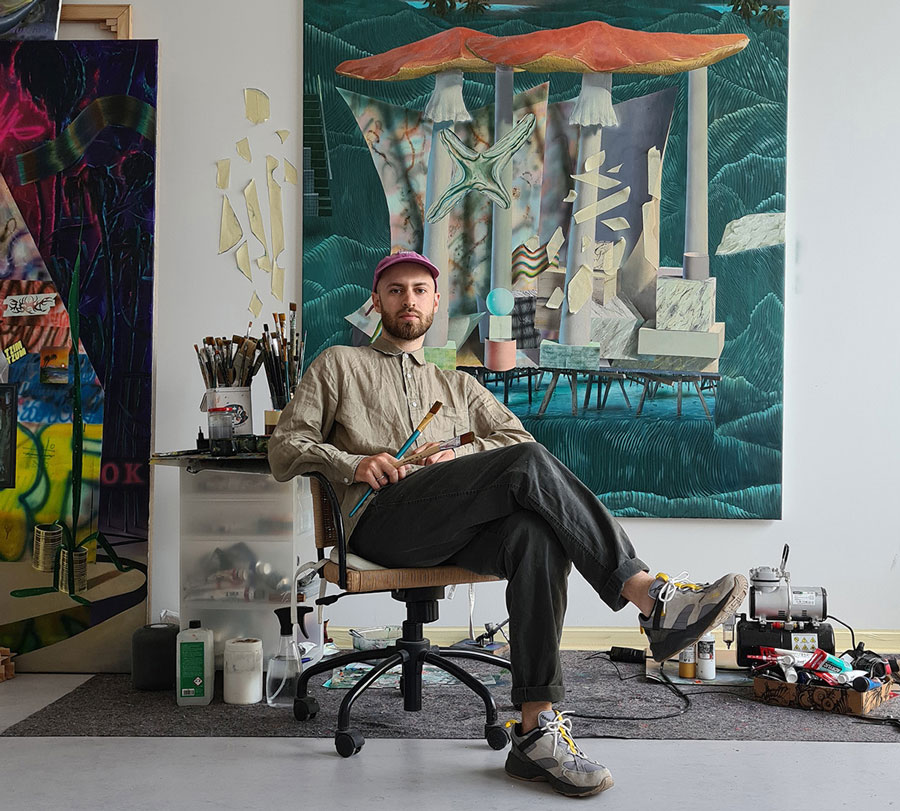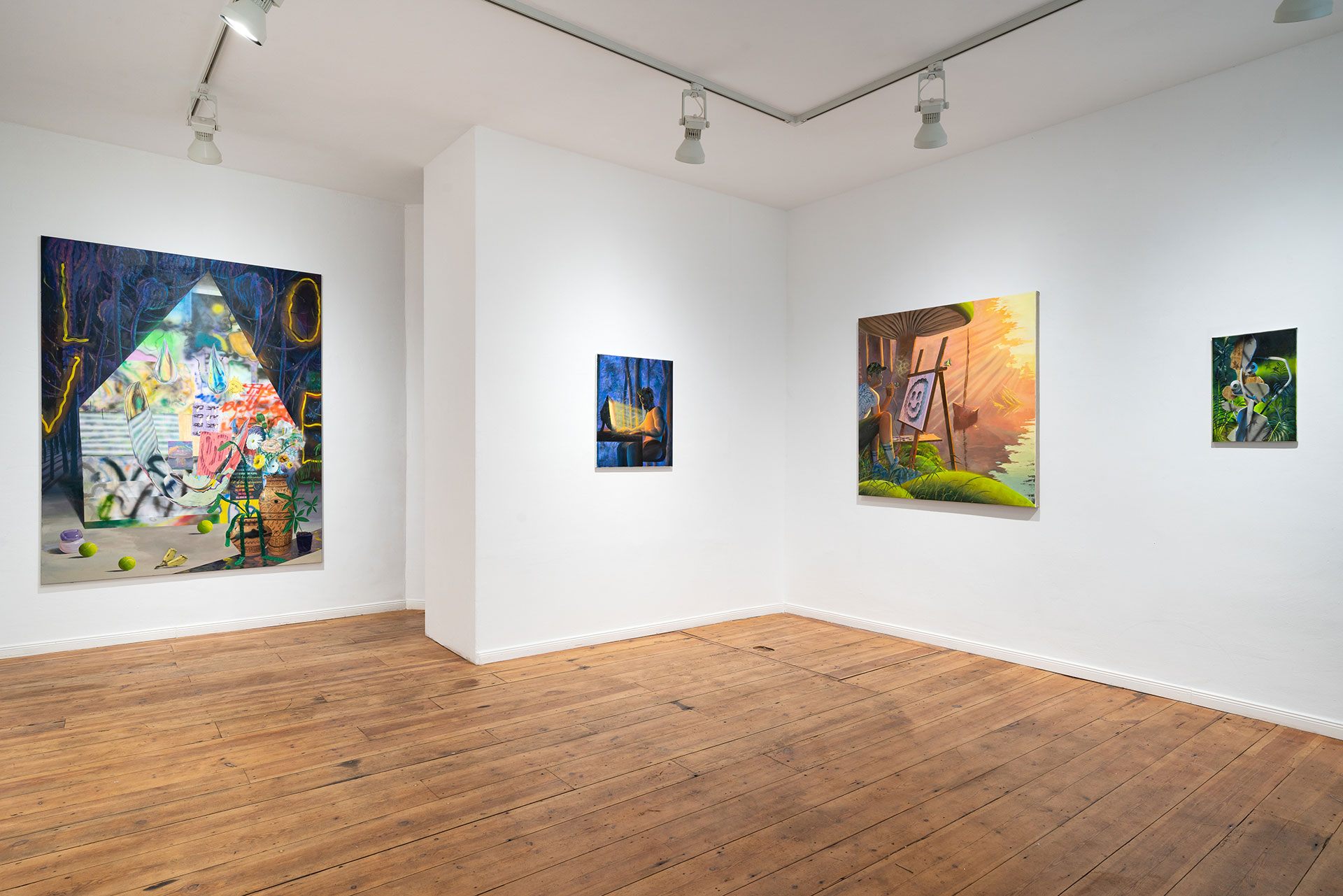Across the works featured in Good News, a kind of symbology plays out, in terms of which Maxim Brandt’s landscapes reveal themselves. The viewer intuits space as a kind of disquieting intimacy—a felt tension between interiority and exteriority, place and architecture. The scenes Brandt depicts seem foreign to anything recognisably domestic. Simultaneously, the overlapping aspects of fantasy and surrealism captured in his impersonal world invoke a levity that seems equally pacific and strange, utopian and absurdist. Good News speaks to a greater ecological consciousness of not feeling at home in this world, while intimating how technology and nature can symbiotically converge.
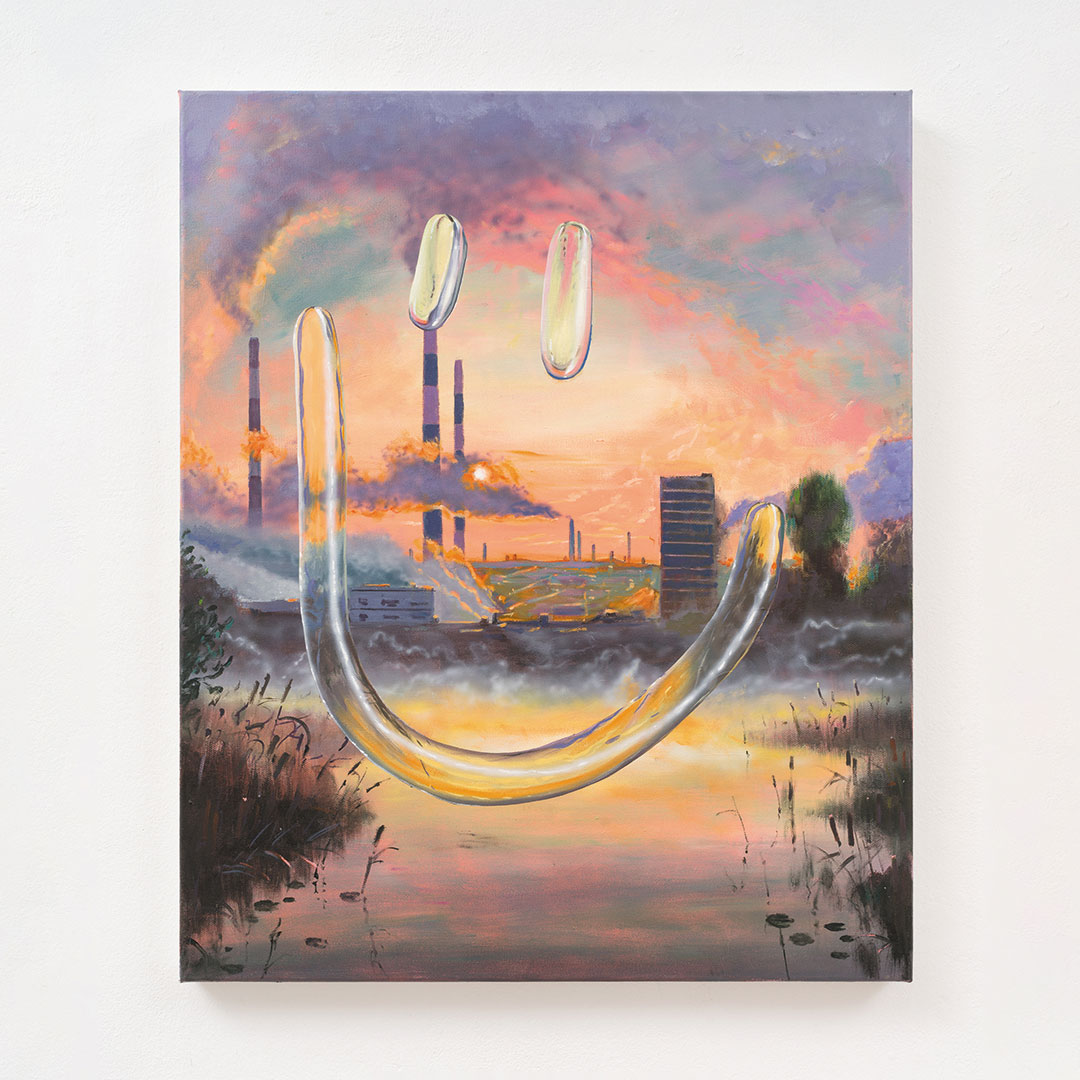
Brandt’s use of recurring motifs lends his pictures a poetic, as opposed to a narrative, feel. These motifs characterise themselves as architectural, spatial, environing, rather than simply allegorical or allusive. Throughout Good News, whenever one of Brandt’s motifs emerges, it acts like a caption ensnaring the elements of the painting into a constellation of significant energies. In works like Genius Loci and The House of the Rising Sun, for example, a liquid-like smiley face imposes itself on the scene. In Genius Loci, the smiley forms against a backdrop comprising mammoth technologies of industrialisation. In The House of the Rising Sun, where the scene is more ambiguous, the smiley yet emerges as an insignia that contextualises the whole landscape.
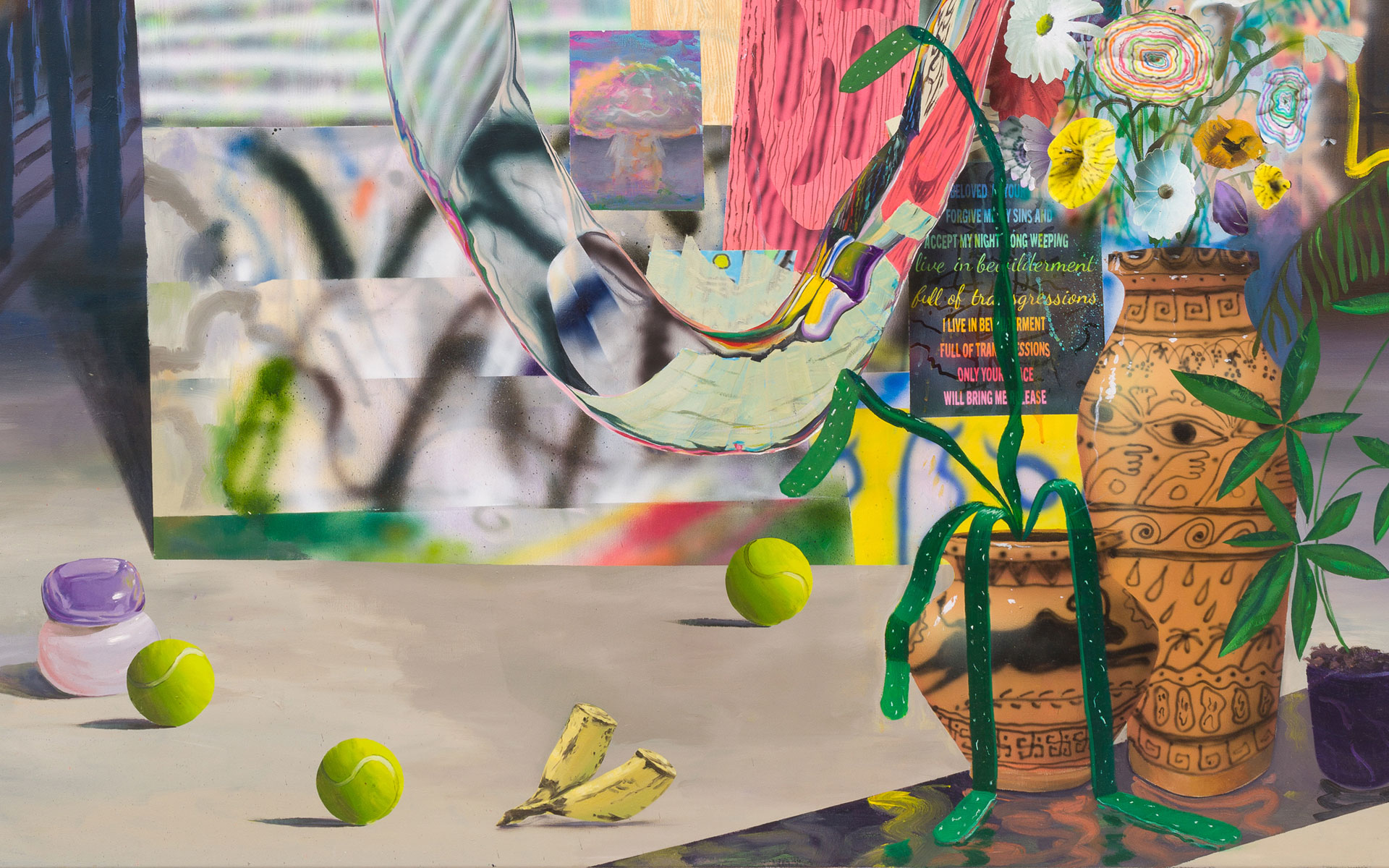
Brandt’s use of symbolic motifs introduces significant spatial transformations. They effectively disrupt the picture’s surface—an ambiguous testament to humanity’s ingenuity and obtuseness in the face of nature. But this allows for allusions to humour to enter into Brandt’s work. I say “allusions” because his paintings don’t intentionally provoke laughter, so much as they poke holes in the paradox where nature and the tools of industry (foraged from natural materials) seem somehow incompatible. This kind of absurdism begets the spectre of vanitas: another motif Brandt wields, where tastefully arranged still life recalls to mind our transience, while also paying homage to all that is beautiful in life.
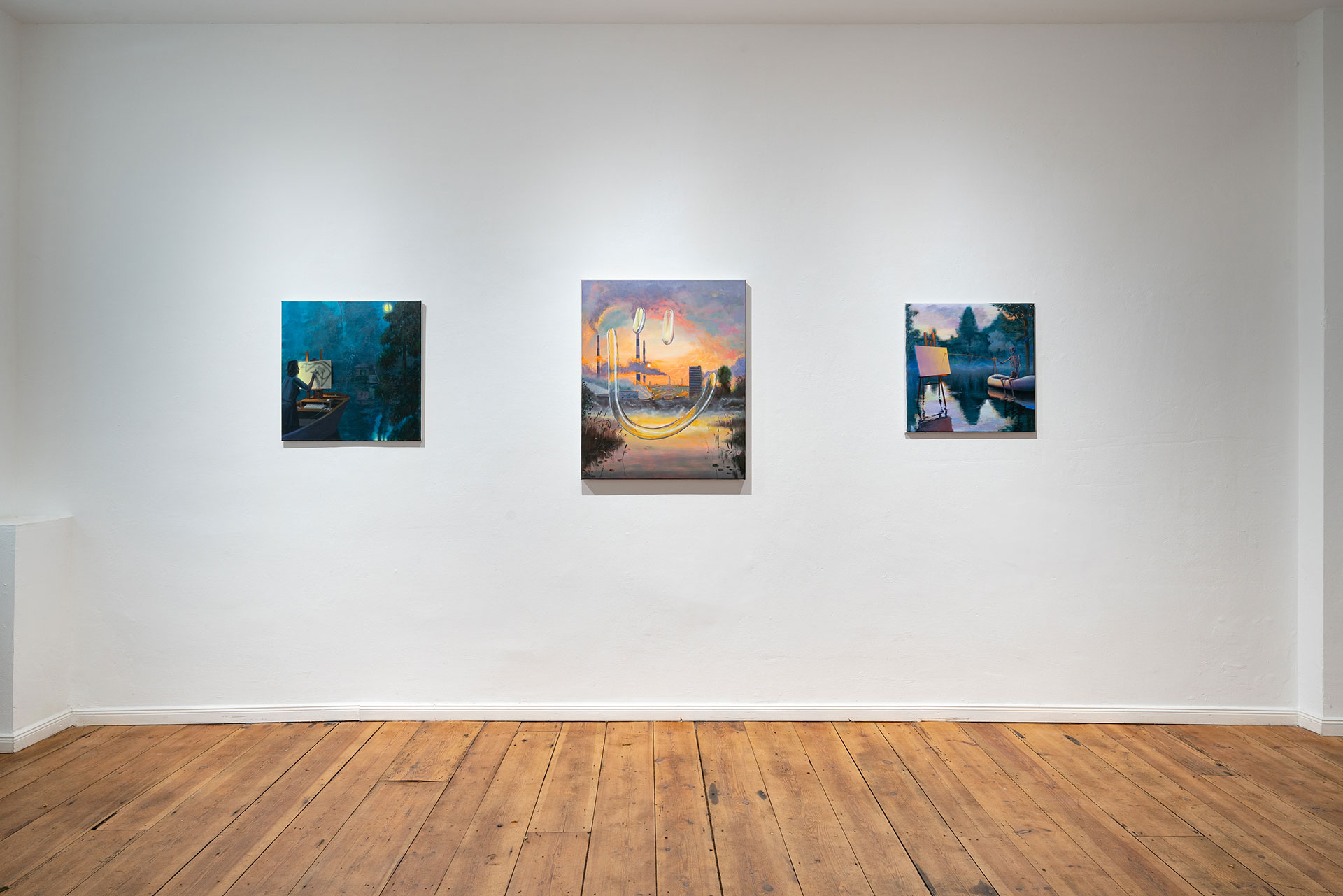
A painting like The Artist makes clear how the motif of vanitas alters the warp and woof of environing textures. More solitary than isolated, an artist-skeleton paints with a long, leisurely stick. However at home on this tranquil lake the figure might appear, an anxious tone, eerily diffuse, seems to emanate from the skeleton. True to the architectural precedents of Brandt’s work, the presence of the skeleton—vanitas embodied—doesn’t work so much to occupy the surrounding environment (how could a ghost occupy anything?), as colour it with an overarching meaning which would otherwise only be implied. Like a wall against which a cyclorama displays, a scenario emerges around the skeleton that reminds us of the necessity of serving nature. In this, Brandt invites viewers to place themselves into the hands of the unknown, which is not to be confused with death.
